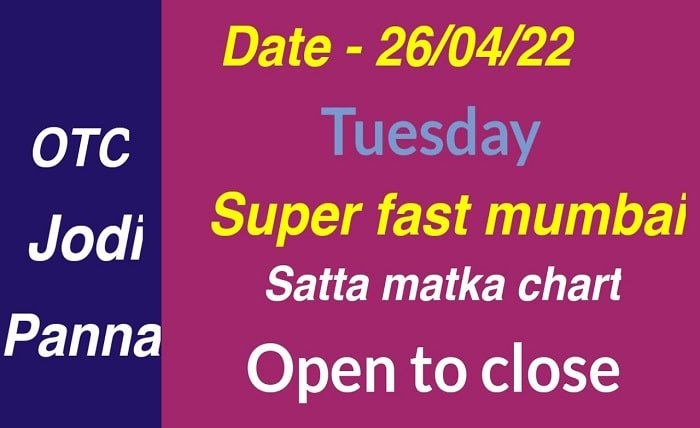
Introduction
In today’s fast-paced world, the ability to quickly and effectively visualize data is crucial for making informed decisions. The super fast chart is an innovative tool designed to meet this need, offering rapid insights through clear and concise data representation. Whether you’re in business, education, or any other field that relies on data, understanding how to utilize super fast charts can significantly enhance your analytical capabilities.
The super fast chart is not just about speed; it’s about presenting data in a way that is easy to interpret and actionable. This guide will delve into the various aspects of super fast charts, from their creation to their application, helping you harness their full potential.
The Basics of Super Fast Charts
A super fast chart is a type of data visualization that prioritizes speed and clarity. Unlike traditional charts that may be cluttered or slow to update, super fast charts are designed to provide immediate insights. The key feature of a super fast chart is its ability to handle large datasets efficiently, making it an invaluable tool for real-time data analysis.
Understanding the basics of super fast charts involves recognizing their structure and functionality. Typically, these charts are streamlined, focusing on essential data points and using dynamic updates to reflect changes instantly. By mastering the basics, you can create super fast charts that are both effective and efficient.
Advantages of Using Super Fast Charts
The primary advantage of using super fast charts is the speed at which they can process and display data. This makes them ideal for environments where time is of the essence, such as financial trading, live reporting, and real-time monitoring. Super fast charts enable users to make quick decisions based on the most current data available.
Another significant advantage is the clarity of presentation. Super fast charts are designed to highlight key data points and trends without unnecessary clutter. This ensures that the viewer can easily interpret the information and take appropriate action. The combination of speed and clarity makes super fast charts a powerful tool for data-driven decision-making.
How to Create a Super Fast Chart
Creating a super fast chart involves several steps, from selecting the right data to choosing the appropriate visualization tools. Here’s a step-by-step guide to help you get started:
- Select Your Data: Identify the dataset you want to visualize. Ensure it is clean and well-organized.
- Choose a Chart Type: Decide on the type of chart that best represents your data (e.g., line chart, bar chart, scatter plot).
- Use Efficient Tools: Opt for software and tools that specialize in creating super fast charts, such as Tableau, D3.js, or Highcharts.
- Customize Your Chart: Tailor the chart to highlight key data points, using color coding, labels, and annotations as needed.
- Test and Optimize: Ensure the chart updates quickly and accurately, optimizing for performance as necessary.
By following these steps, you can create super fast charts that provide immediate and actionable insights.
Tools for Super Fast Chart Creation
There are various tools available for creating super fast charts, each with its own set of features and capabilities. Some of the most popular tools include:
- Tableau: Known for its user-friendly interface and powerful analytics capabilities, Tableau is a top choice for creating dynamic and interactive super fast charts.
- D3.js: A JavaScript library that allows for highly customizable and efficient chart creation, ideal for developers and those with coding experience.
- Highcharts: Another JavaScript-based tool, Highcharts is known for its speed and flexibility, making it perfect for real-time data visualization.
- Google Charts: A free and accessible tool that integrates well with other Google services, suitable for creating basic super fast charts.
- Power BI: Microsoft’s analytics service that offers robust data visualization options and real-time updates.
Choosing the right tool depends on your specific needs and technical expertise. Each tool offers unique advantages for creating super fast charts.
Super Fast Chart Best Practices
To make the most of super fast charts, it’s essential to follow best practices that ensure accuracy, clarity, and efficiency. Here are some key tips:
- Focus on Key Data Points: Highlight the most important information and avoid overloading the chart with too much detail.
- Use Real-Time Data: Ensure your chart updates in real-time to provide the most current insights.
- Optimize for Performance: Streamline the chart to load quickly, even with large datasets.
- Maintain Clarity: Use clear labels, legends, and color coding to make the chart easy to understand.
- Test Regularly: Continuously test the chart’s performance and accuracy, making adjustments as needed.
By adhering to these best practices, you can create super fast charts that are both effective and reliable.
Applications of Super Fast Charts in Business
In the business world, super fast charts are invaluable for a variety of applications. From financial analysis to operational monitoring, these charts provide the rapid insights needed to stay competitive. For example, super fast charts can be used to track sales performance, monitor supply chain efficiency, and analyze market trends in real-time.
By integrating super fast charts into business processes, companies can make data-driven decisions quickly, improving responsiveness and agility. The ability to visualize and act on data immediately is a significant advantage in today’s fast-paced business environment.
Super Fast Charts in Education and Research
Super fast charts also play a crucial role in education and research. Educators can use these charts to present data in a way that is engaging and easy to understand, helping students grasp complex concepts more quickly. In research, super fast charts enable scientists and analysts to visualize data trends and correlations in real-time, facilitating faster discoveries and insights.
The use of super fast charts in these fields enhances learning and research outcomes by making data more accessible and actionable. Whether in the classroom or the lab, super fast charts are a powerful tool for advancing knowledge and understanding.
Real-Time Monitoring with Super Fast Charts
One of the most compelling uses of super fast charts is in real-time monitoring. Whether it’s monitoring network performance, tracking website traffic, or observing environmental conditions, super fast charts provide instant visibility into critical data. This real-time monitoring capability allows for immediate responses to changes and potential issues.
For example, IT professionals can use super fast charts to monitor server health and network traffic, quickly identifying and addressing problems before they escalate. Similarly, environmental scientists can track weather patterns and pollution levels in real-time, enabling timely interventions.
Future Trends in Super Fast Charts
The future of super fast charts looks promising, with advancements in technology poised to enhance their capabilities even further. Emerging trends include the integration of artificial intelligence and machine learning, which can provide more sophisticated data analysis and predictive insights. Additionally, increased use of cloud computing will enable even faster data processing and visualization.
Another trend is the growing importance of mobile compatibility, allowing users to access and interact with super fast charts on the go. As these technologies evolve, super fast charts will become an even more essential tool for real-time data analysis and decision-making.
Conclusion
Super fast charts are a powerful tool for anyone who needs to visualize data quickly and effectively. By understanding their features, benefits, and best practices, you can harness the power of super fast charts to make better decisions and gain deeper insights. Whether in business, education, research, or real-time monitoring, super fast charts provide the speed and clarity needed to stay ahead in a data-driven world.
The ability to create, customize, and optimize super fast charts is a valuable skill that can enhance your analytical capabilities and improve outcomes. Embrace the potential of super fast charts and transform the way you interact with data.
FAQs
1. What is a super fast chart? A super fast chart is a type of data visualization designed for rapid and efficient data processing and display, providing immediate insights and clarity.
2. How do I create a super fast chart? To create a super fast chart, select your data, choose an appropriate chart type, use efficient visualization tools, customize your chart, and test for performance.
3. What are the best tools for creating super fast charts? Some of the best tools for creating super fast charts include Tableau, D3.js, Highcharts, Google Charts, and Power BI, each offering unique features for efficient data visualization.
4. How can super fast charts benefit my business? Super fast charts can benefit your business by providing real-time insights, improving decision-making, enhancing operational monitoring, and enabling quick responses to market trends.
5. What are the best practices for using super fast charts? Best practices for using super fast charts include focusing on key data points, using real-time data, optimizing for performance, maintaining clarity, and regularly testing for accuracy and efficiency.





